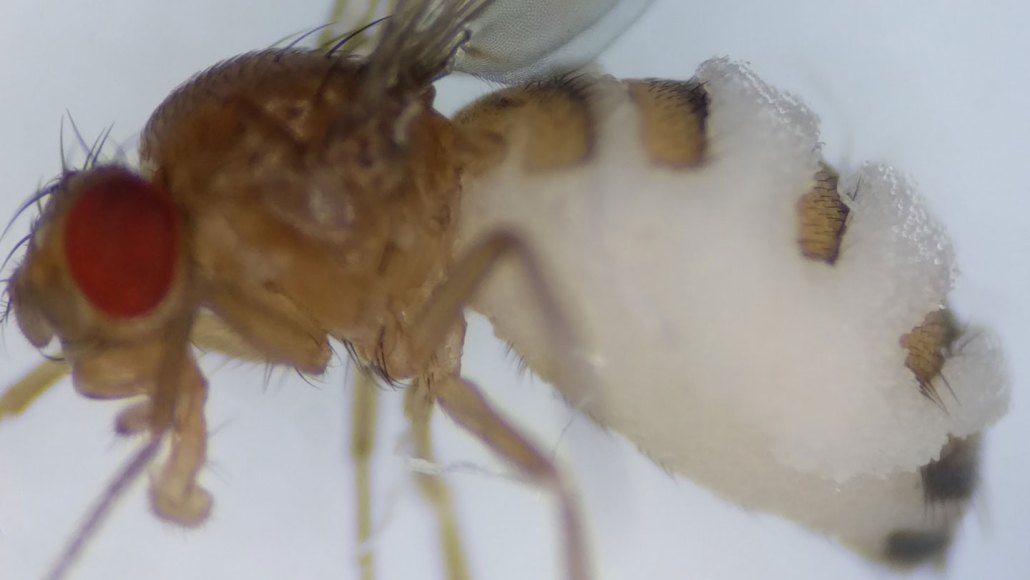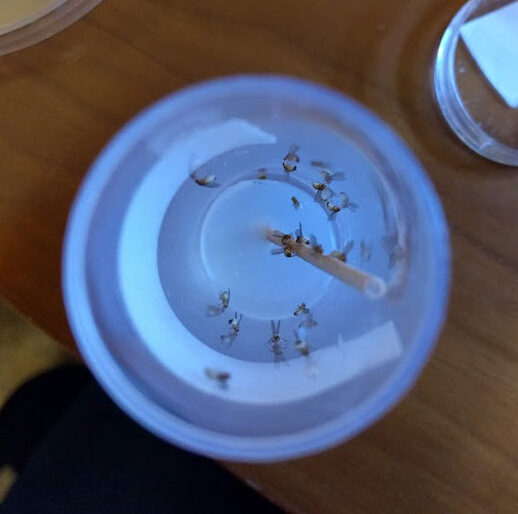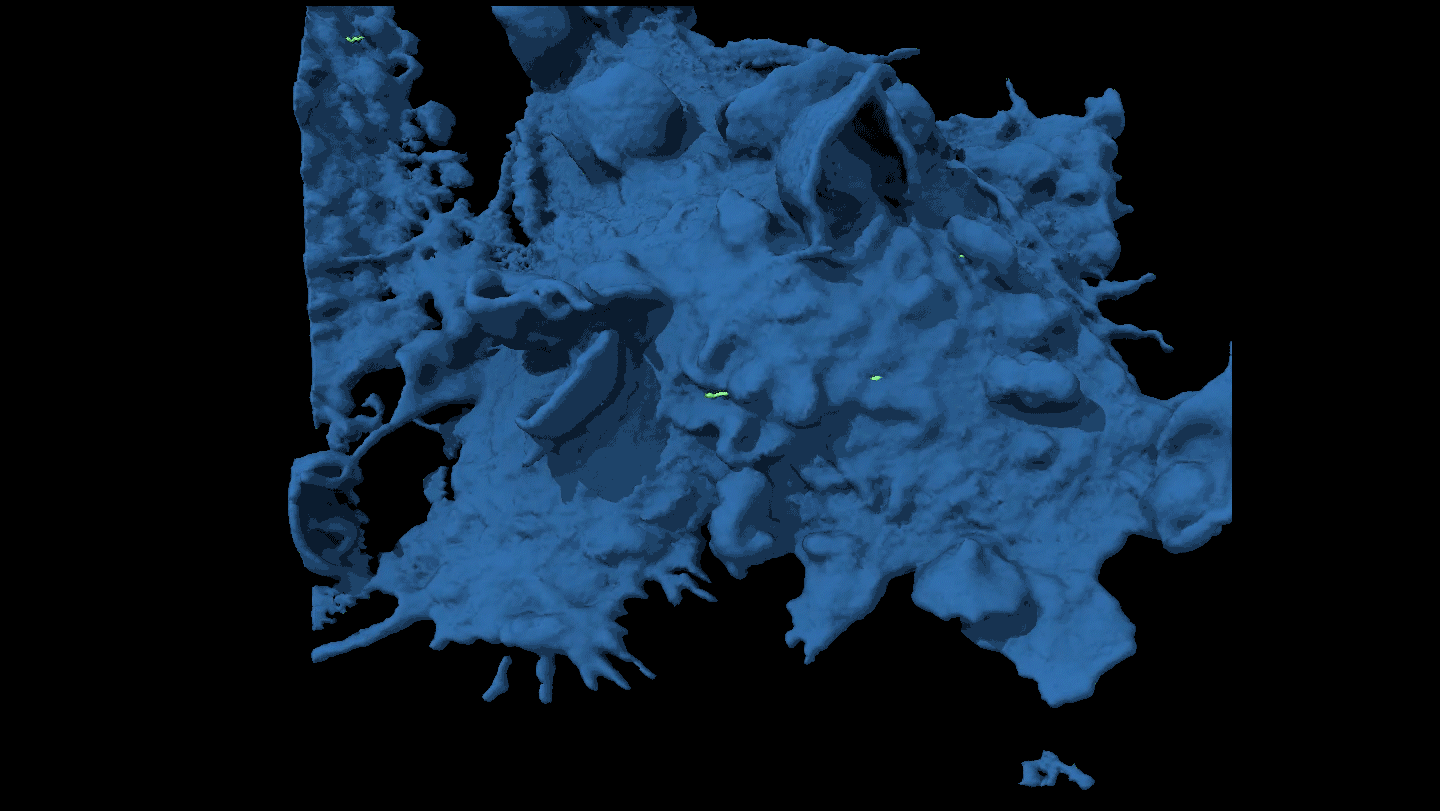This killer fungus strikes at sunset. Here’s how
Entomophthora muscae has an internal clock that controls the timing of flies’ deaths

No, this fungi-infected fly did not just step out of a bubble bath. The white, sudsy looking structures erupting from the insect's back are for launching fungal spores.
Carolyn Elya Lab







